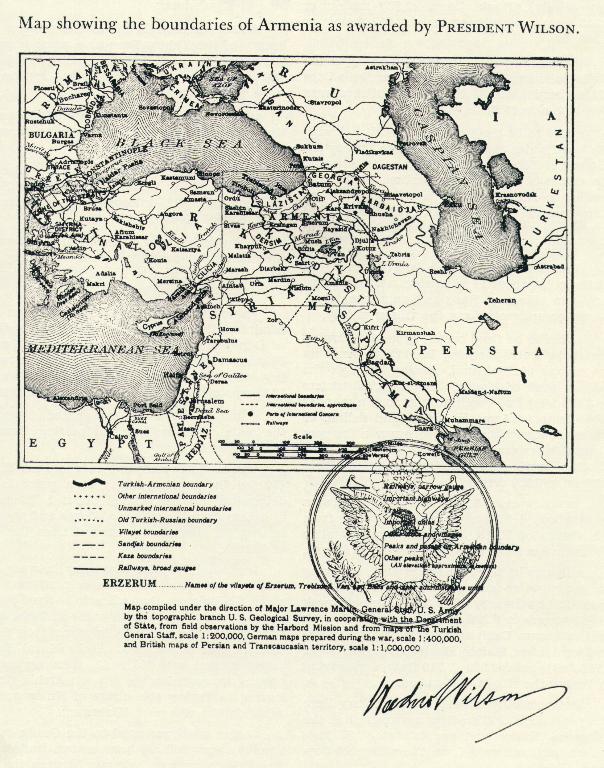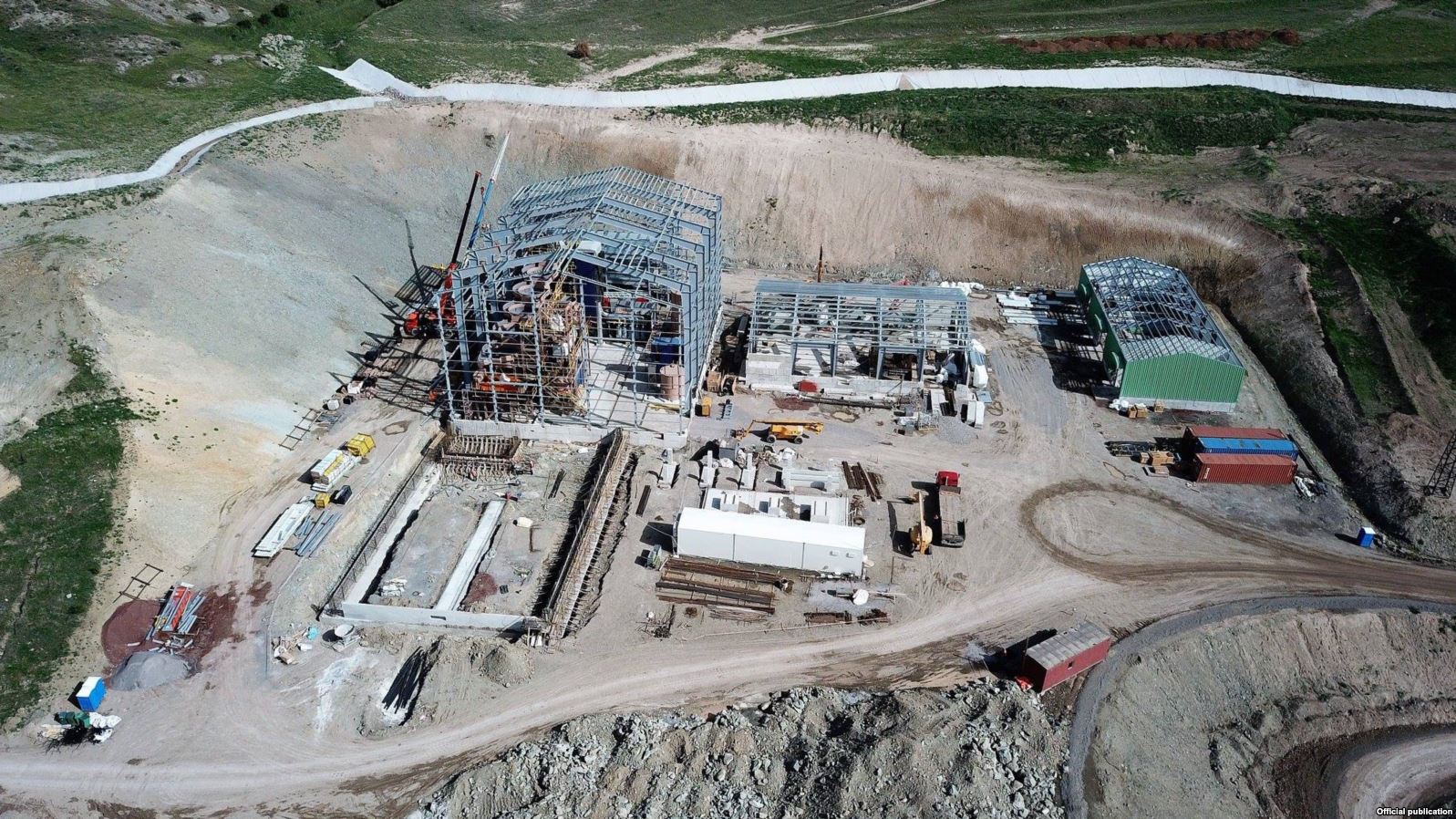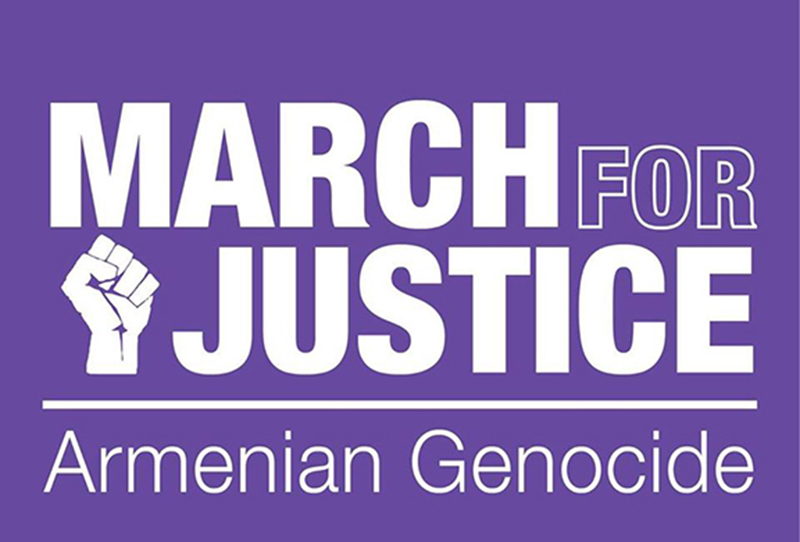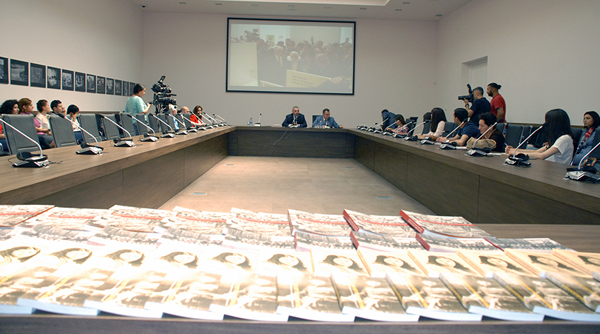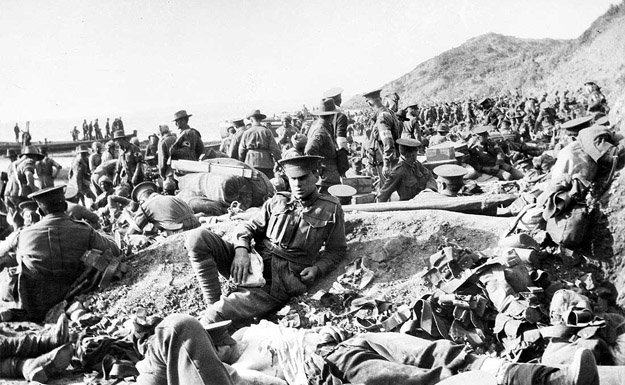By Hrayr S. Karagueuzian
The recent lawsuits brought against the Republic of Turkey and two Turkish banks seeking compensation for Armenian properties and lands left behind in the aftermath of the Armenian Genocide reminds us of the 1925-20 attempts of The Armenian refugees to regain their belongings. It was during this period that Mr. Léon Pachalian, Secretary General of the Central Committee of Armenian Refugees in Paris, repeatedly appealed to the League of Nations in Genèva insisting that Turkey’s ban on Armenian refugees to return and repossess their confiscated properties in Turkey was a “flagrant violation” of the “letter and the spirit” of Articles 37 to 44 of the 1923 Lausanne Treaty. (1) These articles dealt with the Protection of Minorities who inhabited in Turkey.
Article 37 of the Lausanne Treaty states: “Turkey undertakes that the stipulations contained in Articles 38 to 44 shall be recognized as fundamental laws, and that no law, no regulation, nor official action shall conflict or interfere with these stipulations, nor shall any law, regulation, nor official action prevail over them.”
Subsequent Articles 38 to 43 explicitly lay out the rights of Non-Muslim Minorities in Turkey: “The Turkish Government undertakes to grant full protection … to all inhabitants of Turkey without distinction of birth, nationality, language, race or religion…Turkish nationals belonging to non-Moslem minorities will enjoy the same civil and political rights as Moslems. All the inhabitants of Turkey, without distinction of religion, shall be equal before the law.” (2)
Pachalian’s petition interpreted all inhabitants of Turkey to also include Turkish citizens of Armenian origin who had resided continuously in Turkey till the 1915-21 period but were for a variety of reasons (study abroad, medical reasons, trade, refugees) not in Turkey. The Armenian thesis was that all Turkish citizens, without distinction of religion, shall be equal before the law.
In the last Minorities section (Article 44) of the Lausanne Treaty we read: “Turkey further agrees that any difference of opinion as to questions of law or of fact arising out of these Articles between the Turkish Government and any one of the other Signatory Powers or any other Power, a member of the Council of the League of Nations, shall be held to be a dispute of an international character…The Turkish Government hereby consents that any such dispute shall, if the other party thereto demands, be referred to the Permanent Court of International Justice. The decision of the Permanent Court shall be final…”
Armenians having no sovereign state were neither a member of the “Signatory Powers” of the Lausanne Treaty nor a Member of the League of Nations, therefore the appeal by Pachalian was made to the League and not to the Court of Justice.
As expected, the Turkish response was negative. In his letter to the Chairman of the Board of the League of Nations, dated February 25 1928, the Turkish Foreign Minister, Dr. Tévfic Rüstü (Aras) M.D., rejected the Armenian requests. He instead insisted that the Armenians belonged to a “different category”, and that they were not “refugees” but “guilty fugitives” who “committed reprehensible acts” and “refused to integrate within the Turkish territory.” (1)
The letter then goes on to insist that the “Amnesty and the right to return home were essentially two different issues. Turkey had the right to allow the return for only those who are not inconvenient for Turkey. Those denied reentry will also lose their Turkish citizenship.” The letter then further added that the decree of May 23, 1927 strips Turkish citizenship from “Ottoman subjects who during the war of Independence did not participate in the National struggle and were residing outside Turkey during the period July 24, 1923 to May 23, 1927. (2) It appears that the decree of May 1927 (adopted 20 months after Pachalian’s first petition to the League in August 1925) was created to produce new rules in order to justify the Government’s seizure of Armenian wealth. This was important for Turkey because none of the refugees who requested return to their homes had any criminal records, and were all exempt from Turkish charges such as, “trouble makers”, “elements of disorder or revolution.” Therefore, a new order of incriminating evidence had to be concocted to legitimize confiscation of the Armenian wealth. This was the non-participation of the Armenians in the Turkish National “struggle.” This discriminatory policy directed exclusively against the Armenians violated “the spirit of the amnesty as formulated in the Lausanne Treaty.” This is evidenced by the case of the 150 convicted Turkish Moslems who were denied amnesty by the Treaty of Lausanne and were banned from entering Turkey. These convicts had been tried by 1918-19 Turkish Military Tribunals and were condemned to death. Not only the lives of these convicts were spared, but they were also all allowed to keep their citizenship and their properties in Turkey. (1)
Upon receipt of Rüstü’s hostile response in 1928, Mr. Pachalian’s Committee recruited four internationally recognized jurists with expertise in international law and treaties to specifically study and analyze the legal and moral validity of the Armenian thesis in the interpretation of the Lausanne Treaty. The three experts were Professors of International Law at the University of Paris and Members of the Institute of International Law, Gilbert Gidel, Albert de Lapradelle, and Louis Le Fur, and the fourth expert was Dr. Andre N. Mandelstam, Professor of International Law at the Petrograd University. All four scholars unanimously confirmed the validity of the Armenian thesis and repudiated the Turkish response as legally invalid. (1)
The League of Nations, “guardian” of the Lausanne treaty, however produced nothing in the way of helping Armenian refugees to regain their properties and assets in Turkey. As mentioned above, the lack of Armenian statehood prevented the claimants from pursuing their case in the Court of law.
Today 95 years later we hear more forcefully the echoes of Pachalian’s petition in US courts. Lawsuits are brought against the Turkish Government to recoup state-sponsored theft of Armenian wealth considered to be the largest state-sponsored theft in human history according to the Turkish historian Ugur Umit Ungur (3). Now however, the claimants face two formidable obstacles, the ultimate clearance from the US Supreme Court and dealing with a recalcitrant Turkish Government mindset.
The question is then “will the US Supreme Court uphold the 9th Circuit’s Court of Appeals ruling on the constitutionality of the Armenian claims?” The answer seems rather bleak. As a reminder a somewhat similar case had already been put to test before the High Court but had failed. The State of California enacted a statute on the Holocaust insurance reporting act, which became known as the California’s Holocaust Victims Insurance Relief Act (HVIRA). This 1999 law required any insurer, parent company, or anyone “related” to it, doing business in the State of California to disclose to the State all life insurance policies sold in Nazi-controlled Europe between the 1920 to 1945 period to allow the surviving heirs to collect the benefits. Failure to comply with this law would result in the revocation of insurance licenses of all insurers doing business in the State of California. Five years after its enactment and on June 23, 2003, the U.S. Supreme Court struck down California’s HVIRA law in a 5 to 4 vote. The High Court argued that HVIRA was “unconstitutional” and that it “interfered with the President’s conduct of the Nation’s foreign affairs.” (4)
A new study, prepared for The New York Times by scholars at Northwestern University and the University of Chicago, analyzed some 1,450 decisions since 1953, concluded that “the percentage of business cases on the Supreme Court docket has grown in the Roberts years (current Chief Justice), as has the percentage of cases won by business interests.” For example, the positions supported by the Chamber of Commerce prevailed 68 percent of the time in the Roberts court, compared with 56 percent in the last 11 years of the Rehnquist court, a period without changes in the court’s membership. (5)
The second question is how the Turkish Government through its FM Mr. Daoudoghlu will respond to the two fundamental questions: the stripping of Turkish citizenship and illegal confiscation of Armenian properties and bank deposits. Will he choose his predecessor Rüstü’s formula or will he bow to righteousness and virtue. Daoudoghlu has in his hands wild cards that Rüstü did not have.
But first let us first examine who Dr. Tevfik Rüştü (Aras)was. He was a partisan Ittihadist and the brother-in-law of Dr. Mehmet Nazim, one of the masterminds of the Genocide, who directly participated in the anti-Armenian measures as a “policy of general extermination” designed to eliminate “the danger” to Turkey of “a dense Armenian population in the eastern Provinces.” As physicians he and Dr. Nazim concerned about the widespread epidemics resulting from the thousands of decomposing corpses of the Armenian victims piled up in the streets of the eastern provinces where large scale massacres had taken place in 1915, had set up the Supreme Hygiene Council, whose task was to destroy and hide the bodies. According to a secret document presented as evidence by police director-general Mustapha Raşad during the 1918-1919 Turkish Military Tribunals, Dr. Rüştü was sent to the eastern provinces with tons of lime to cover and hide the bodies. Dr. Rüştü successfully put in place the necessary machinery for the quick disposal of the corpses by transforming wells into mass graves. He ordered and oversaw the throwing of the bodies in the wells, which were then filled with lime and sealed with earth. Dr. Rüştü was arrested on February 2, 1919 by the orders of the Tevfik Paşa Cabinet along with other Ittihadist leaders. He was later released and joined the Kemalist movement and became a long-serving Minister of Foreign Affairs in the new Turkish Republic, from 1925 to 1938, under Mustafa Kemal’s presidency.
Will Daoudoghlu respond in the manner of his predecessor? Well for one Daoudoghlu is not “Dr. Mass Grave” and he does not have to fear a fate like that of Milosevic or Karadjic. Secondly, in the aftermath of the signing of the protocols Daoudoghlu most excitedly declared that “we buried the Sèvres” meaning that there no longer were territorial claims by the Armenians and as a result past fears of “partitioning Turkey” were no longer valid.
What then remains is a simple claim of ownership and repossession of one’s own properties and assets. Refusal to yield amounts to no less than theft, in this case, the continuation of a state-sponsored theft of its own citizens’ wealth.
Notes & References
1) Confiscation des Biens des Refugiés Arméniens par the Gouvernement Turc (Confiscation of the Properties of the Armenian Refugees by the Turkish Government) Consultation of M.M. Gilbert Gidel, Albert De Lapradelle, Louis Le Fur, André N. Mandelstam (Paris, Imprimerie, Massis, 1929).
2) L. Israel, ed., Major Peace Treaties of Modern History, Volume IV. (New York, NY: Chelsea House Publishers and McGraw Hill Book Co, 1967), pp 2341-2342
3) Ugur Ungur Umit: Theft of Armenian Wealth, UCLA symposium April 2010 (His book is forthcoming in Spring of 2011)
4) Hrayr S. Karagueuzian & Yair Auron; A Perfect Injustice: Genocide & Theft of the Armenian Wealth. Transaction Publishers, Rutgers University, NJ 2009
5) Adam Liptak: Justices Offer Receptive Ear to Business Interests, New York Times, December 18, 2010.
The author is Professor of Medicine & Director Translational Arrhythmia Research Section of
Cardiovascular Research Laboratory, Division of Cardiology, David Geffen School of Medicine at UCLA
675 Charles E. Young Dr. South
Los Angeles, CA 90095
Phone: 310-825-9360; Fax: 310-206-5777; E-mail: [email protected]

